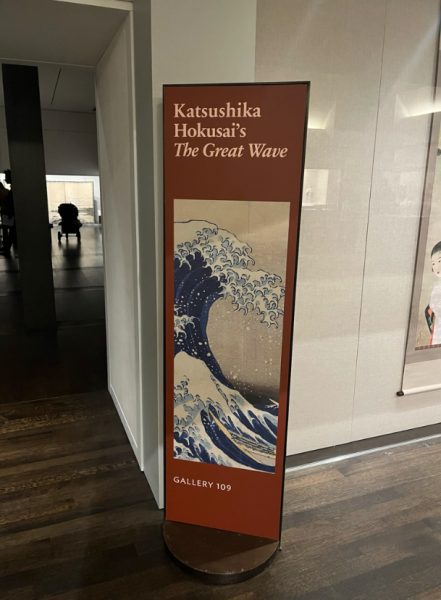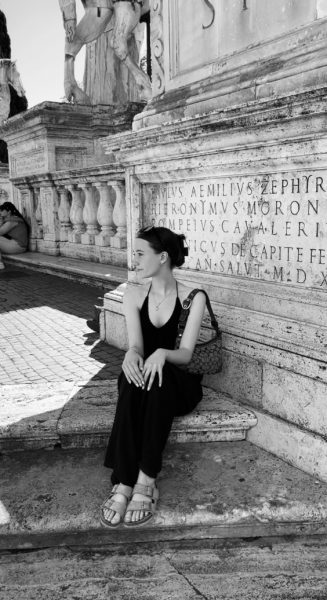In 1831, at 71 years old, Katsushika Hokusai created the masterpiece The Great Wave off Kanagawa. Rich, full of history, narrative, and traditional Japanese art techniques, The Great Wave is part of a bigger project of Hokusai called the Thirty-Six Views of Mount Fuji. Mount Fuji is depicted in a series of landscape prints from different views, settings, and seasons. However, this specific print became the most prominent of the entire series in Asia and the Western world.
This was created during the Edo Period which was known for “ukiyo-e”, an art period where art reflected the pleasures of life and was used for entertainment. However, this piece and many other prints of his strayed away from the typical norms of the ukiyo-e style. Unlike most ukiyo-e artists, Hokusai depicts the daily life of regular everyday people, not courtesans and kabuki actors, which was the customary subject of ukiyo-e prints. However, he still used the same materials as other ukiyo-e artists. Each print in ukiyo-e art is made out of wooden blocks. Artists create a sketch on a thin sheet of paper, then transfer it to woodblocks and carve the lines of the image into the block. Each woodblock differs in color, making each print unique.
Additionally, separate woodblocks are carved for each color in the print, and to culminate, a black outline is added on top. Some of the colors in this print are the notorious Prussian blue, white, indigo, etc. Ultimately, this meticulous process is fascinating because of the amount of time and effort required.
While most people think this piece revolves around the giant wave, hence its name, it actually revolves around Mount Fuji. He shows by using a technique called “composition compulsion,” which involves going around in a circle, thus giving views a central focus. The viewer’s eyes start at the right side of the print and follow it to the giant wave, which then leads us to Mount Fuji and back to the right.
The story depicted in this painting is seen not through the waves but through the boats. There are three boats spread throughout the painting each with fishermen. One can infer that they carry a day’s work with them. Despite the chaos in this scene, the fishermen remain steadfast and persevere through the storm. The wave feels like it is reaching out at them, with the sea foam looking like fingers. This exemplifies the resilience of the common folks, relating to Hokusai’s more significant focus and the theme of man vs. nature.
Although the Great Wave is one of the most famous pieces of art today, in 17th-century Japan, it was considered low art. In Japan, prints were mass-produced, inexpensive, and sold as commercial designs. Prints were for the growing middle class so they could afford art. It’s estimated that around two hundred prints of the Great Wave remain to this day; however, back then, there were as many as eight thousand. Three of these prints are housed at the Art Institute of Chicago. Currently, they have one out of the three on display and will be on display until January 6, 2025.



















